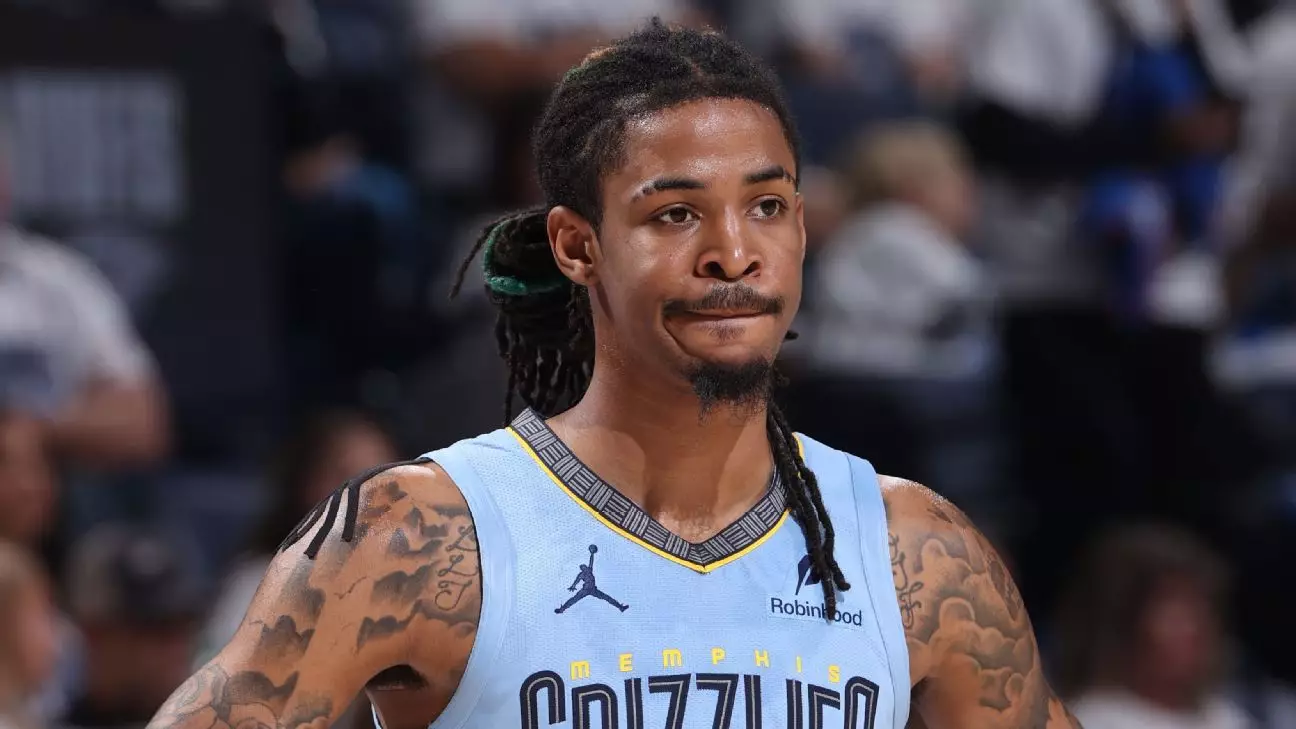In the realm of sports, particularly basketball, where emotions run high, the line between competition and conflict can become dangerously blurred. Such dynamics were vividly illustrated in the case involving NBA star Ja Morant and Joshua Holloway, a teenager and collegiate basketball player. The incident, which took place during a casual pickup game at Morant’s family home in Memphis, serves as a stark reminder of the complexities of self-defense laws and the responsibility that comes with being a public figure. Morant, who has a burgeoning career in the NBA with accolades including multiple All-Star selections, found himself facing a lawsuit from Holloway, who alleged assault stemming from an altercation during this seemingly innocent game.
Holloway, then a high school student, had been invited to participate in a daylong basketball event that included several other players. However, the friendly spirit of the game took a dark turn when tensions flared. The primary catalyst was a physical interaction during a common basketball ritual known as a “check,” which serves to confirm readiness and establish a mutual respect before competition ensues. In the chaos of competitive enthusiasm, Holloway reportedly threw the basketball at Morant’s face. In response, Morant struck Holloway once, a move that would lead to serious repercussions both legally and reputationally.
Legal Turbulence: The Dichotomy of Claims
The judicial outcome of this incident is particularly noteworthy, having just recently culminated in the dismissal of Holloway’s lawsuit by Judge Carol Chumney. In her ruling, Chumney cited Morant’s assertion of self-defense, finding that under Tennessee law, he deserved a presumption of civil immunity. This ruling hinges on the state’s “stand your ground” law, which allows individuals to protect themselves when they feel threatened. While this law is often discussed in the context of criminal cases, its application here in a civil matter raises significant questions about societal norms regarding self-protection.
During the proceedings, the contrasting narratives presented by both parties painted a picture of two conflicting perspectives. Holloway claimed that Morant had unjustly escalated the situation by using excessive force in response to what he saw as a provocation. On the other hand, Morant’s legal team maintained that he believed himself to be in imminent danger after Holloway’s actions—an argument substantiated by testimonies from other attendees, including former NBA player Mike Miller, who indicated that Holloway’s initial action was a significant contributing factor to the altercation.
The Ripple Effect of Conflict in Sports
For anyone closely following the NBA or any competitive sport, the ramifications of such incidents extend beyond the court; they seep into the lives of those involved and the larger community. Young athletes often look up to professional players not just for their skills on the court, but for their conduct and character off it. The Morant-Holloway incident encapsulates a critical moment for both individuals as they navigate their identities as role models in their respective spheres. The judge’s sentiment that both players should redirect their energies from the courtroom back to the court is a poignant reminder of the responsibilities held by athletes, especially when public scrutiny is rife.
The incident shines a light on how swiftly sportsmanship can devolve into aggression, and the challenge of reframing competitive fervor into constructive interactions. Morant’s journey has been marked by both triumph and controversy, and how he navigates this incident will undoubtedly inform public perception and affect his legacy as an NBA star. Meanwhile, Holloway’s experience serves as a cautionary tale about the fine line between ambition and entitlement, particularly for young athletes seeking their place in a highly pressurized environment.
As the dust settles from this legal battle, both Morant and Holloway are left to reflect on what this means for their careers. The courtroom, unlike the basketball court, offers no physical scoreboard; the measures of success and failure engage a different set of criteria, often rooted in public opinion and personal growth. In this intricate tapestry of sports, law, and personal accountability, the aspirations of both young men stand as testaments to the challenges that arise when ambition is met with personal conflict.

